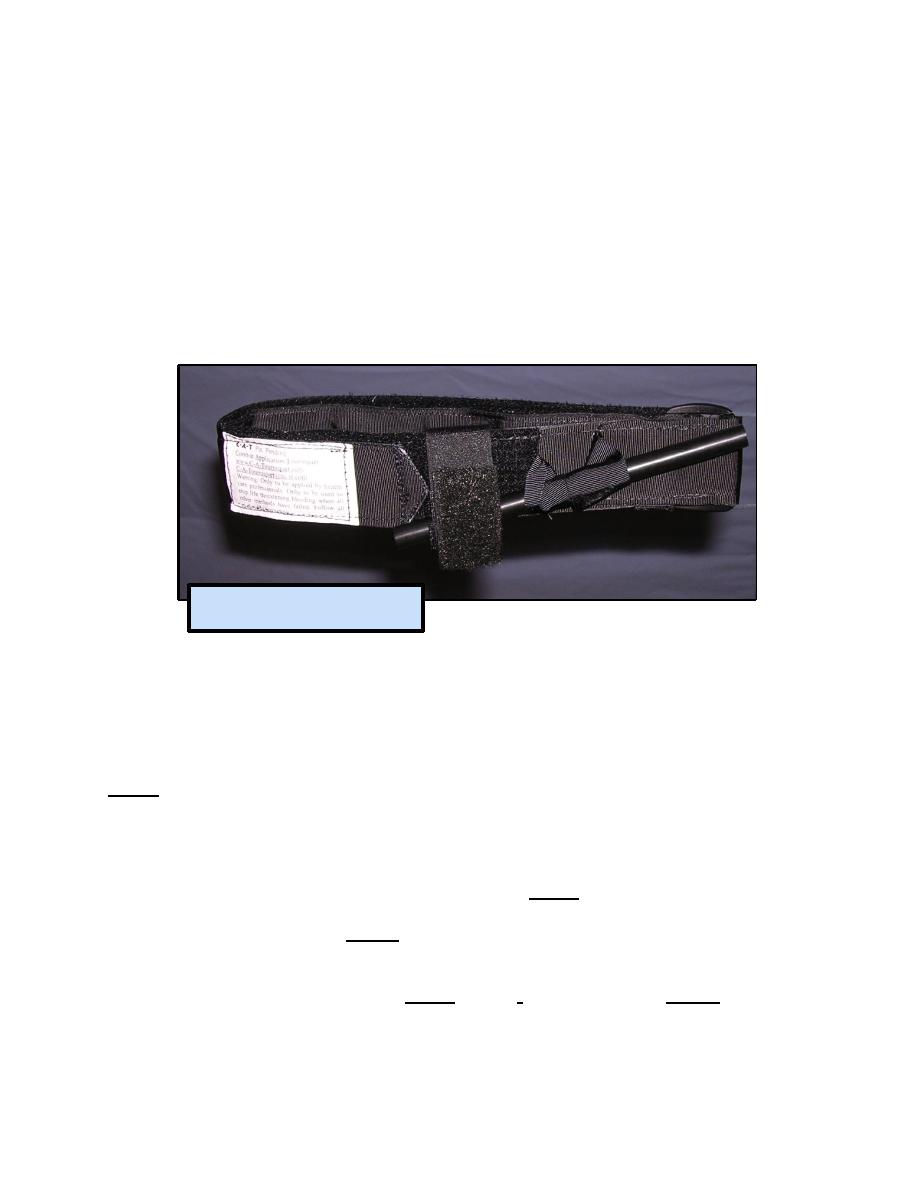
(2) A person whose arm or leg has been amputated may not be bleeding
when first discovered, but a tourniquet should be applied anyway. This absence of
bleeding is due to the body's normal defenses (contraction and clotting of blood
vessels) as a result of the amputation. However, bleeding will start when the blood
vessels relax or if the clot is knocked loose by moving the casualty.
WV l pM6Q€ s
initix`pM `pM `pMIWVEcV+WV IWV IWV `pM6x`pM `pM `pM
i7
7
5-8. APPLYING A COMBAT APPLICATION TOURNIQUET
WV IWVEcR9 c-l
A Combat Application Tourniquet (figure 5-5) is the tourniquet of choice. The
Combat Application Tourniquet (CAT) is effective and can be applied quickly.
Procedures for applying the CAT are given below.
Sel el l7
u:
Self-A 7
Figure 5-5. The Combat Application Tourniquet.
a. Remove the CAT from the casualty's first aid kit.
b. Remove the CAT from its pouch.
NOTE:
The CAT is packaged in its one-handed configuration.
c. Slide the wounded extremity through the loop of the Self-Adhering Band
(figure 5-6 A).
d. Position the CAT (figure 5-6 B) two inches above the wound.
CAUTION:
If the wound is below the knee or elbow, initially position the tourniquet
band two inches above the wound. If a tourniquet applied below the
knee or elbow is not successful at stopping the bleeding, apply a second
tourniquet two inches above the joint (knee or elbow). Do not remove
the first tourniquet until the second tourniquet has been applied.
t
CAUTION:
Do notSV uu a tourniquet over a joint (knee or elbow).
nul V
lS apply
IS0877
5u 2
l
-1



 Previous Page
Previous Page
